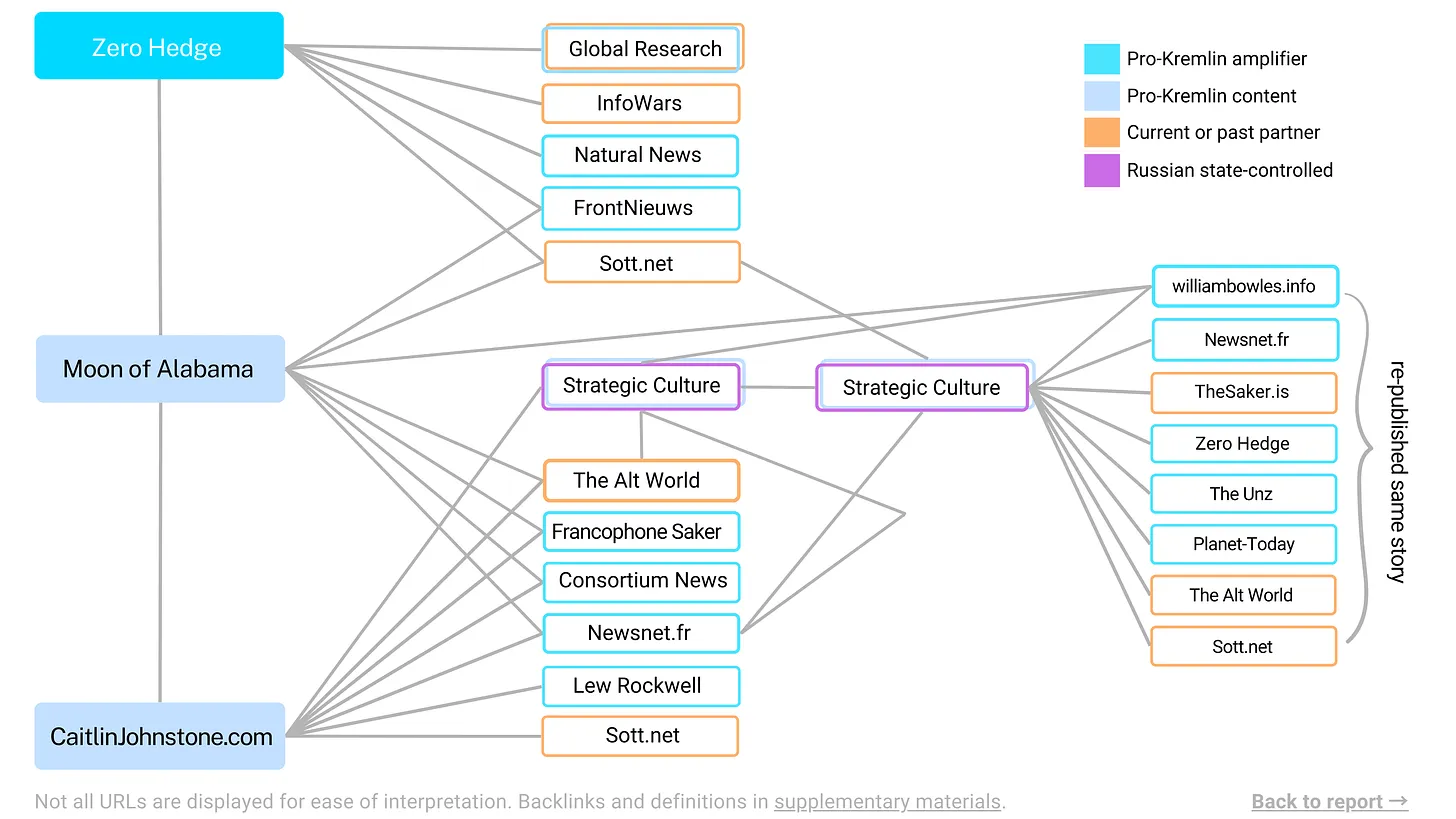
This document is a reference for a report published on June 8, 2022.

A 2020 U.S. Department of State report wrote, “Russia’s disinformation and propaganda ecosystem is the collection of official, proxy, and unattributed communication channels and platforms that Russia uses to create and amplify false narratives” (pg 3).
The nature of malign influence necessitates clear definitions and terms; however, this risks unfair application. To be as equitable as possible, we wish to clarify the following:
Current or past partner
A partnership is a relationship between a website and a state-controlled outlet. One of two criteria results in the label of “partner.
Kremlin amplifier
The website republishes content from outlets controlled by or affiliated with the Russian state, but the flow of content is mostly in one direction. These are often aggregator websites.
Kremlin content creator
The website produces content repeatedly published by or shared by Russian state-controlled outlets. The relationship is generally unidirectional, with the author being republished or amplified by outlets tied to the Russian state. Assumptions should not be made about author consent.
Russian state-controlled
This does not mean someone is wholly controlled by the Russian state. If an entity receives funding from, is employed by (including freelance and contract work), is partially or wholly owned by the Russian state, receives “taskings,” assignments, or orders from Russian intelligence (SVR, FSB, or GRU; see the list. ), we classify this as Russian state-controlled.